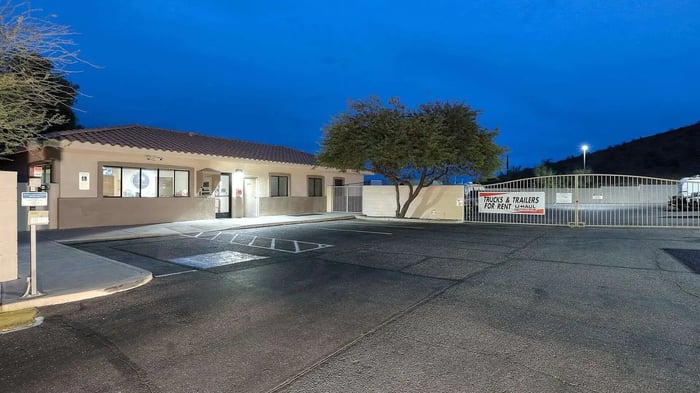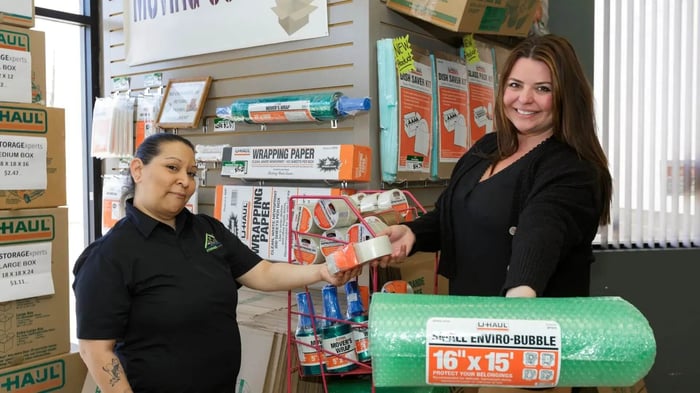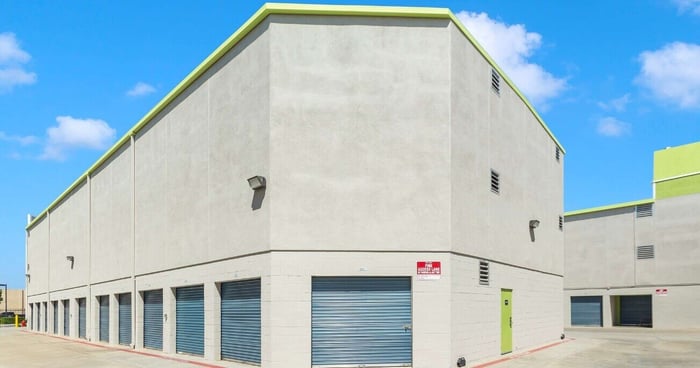Storing your belongings safely requires more than just finding a storage unit. From selecting the right facility to organizing your items effectively, these self storage tips will help ensure your valuables remain in good condition. This guide will walk you through the essentials of protecting your items in self-storage so you can have peace of mind.
Choosing the Right Self Storage Facility
Picking a storage facility is the first and most critical step. The right choice can help reduce risks such as damage, theft, or pest infestations.
Look for Clean and Well-Maintained Spaces
A clean facility lowers the chances of pests or mold affecting your belongings. Check the premises for cleanliness, including shelves, floors, and the condition of individual units. A well-maintained space indicates that management prioritizes upkeep.
Consider Accessibility
Think about how often you’ll need to access your storage space. Facilities that offer extended hours or 24/7 access can make it easier to retrieve your valuables, even if you have an unpredictable schedule.
Evaluate Facility Size Options
Assess the sizes available and explore how shelving units can help you utilize vertical space effectively. A smaller unit with proper shelving might be more cost-effective than a larger one. Stack boxes carefully to optimize the available room.
Rent the Ideal Unit Type
At STORAGExperts, we offer a diverse range of storage unit types to cater to various requirements:
Climate-Controlled Units: Ideal for sensitive items like electronics, artwork, or documents that require protection from extreme temperatures and humidity.
Standard Units: Suitable for everyday storage needs, providing a reliable space for household items, seasonal equipment, or business inventory.
Vehicle Parking: For those needing to store RVs, boats, or other large vehicles, we provide dedicated parking spaces at select locations.
Each unit type is designed to offer convenience and security, ensuring your belongings are stored in the most appropriate environment.
Proper Packing Techniques
Packing is more than just throwing items into boxes. Improper techniques increase the risk of damage, so take the time to pack strategically.
Use the Right Boxes
Opt for sturdy, high-quality boxes for items that are heavy or fragile. Avoid using previously used or damaged boxes, as they can weaken and collapse when stacked.
Provide Cushioning for Fragile Items
Fragile items, such as glassware and antiques, require extra protection. Wrap them in bubble wrap and use enough padding on the sides, top, and bottom of the box. For double security, mark these boxes with a “fragile” label.
Protect Electronics
Electronics need protection from dust and moisture. Wrap them in paper or bubble wrap, and store them in their original boxes if possible. Place the boxes on shelves, not directly on the floor, to keep them safe from accidental spills or damage.
Stack Strategically
Always place heavier boxes on the bottom and lighter ones on top to avoid crushing. Leaving a bit of space between stacks allows for proper air circulation, reducing the risk of mold.
Organizing Your Storage Unit
An organized unit makes it easier to find and retrieve items quickly. By creating a logical layout, you’ll save time later and avoid unnecessary hassle.
Develop a Storage Map
Map out where everything will go before you start stacking boxes. Place the most frequently used items near the front, while long-term storage can be placed toward the back. Keep furniture and larger items to the sides to leave a clear path.
Include Shelving Units
Shelving units are one of the best ways to maximize vertical storage. Use them to store smaller boxes or valuables that you need quick access to, such as tools and important documents.
Label Every Box
Label each side of your boxes so you can easily identify the contents, no matter which way a box is stored. Combine clear labeling with a checklist to track everything in the unit.
Climate Control Considerations
Temperature and humidity can wreak havoc on stored items, especially over long periods.
Understand the Risks of Temperature Swings
Fluctuating temperatures can warp furniture, damage electronics, or ruin antiques. Climate-controlled units maintain steady temperatures, minimizing these risks.
Protect From Moisture and Mold
Over time, even slight dampness can lead to the growth of mold. Choose a storage unit that’s not prone to moisture issues. Using desiccants, moisture absorbers, and plastic covers can provide extra protection.
Security Features to Look For
Keeping your belongings safe begins with securing the storage area.
Surveillance and Monitoring
Find a facility with active surveillance, such as those equipped with security cameras that cover all spaces. Visible cameras serve as a deterrent against theft, providing increased peace of mind.
Sturdy Locks
Use heavy-duty padlocks designed for storage units. Some facilities even offer units with integrated locking systems for added protection.
Limited Access
Facilities that use gated access with PIN codes or biometric locks provide an additional layer of security by controlling who enters the property.
Labeling and Inventory Management
Staying organized goes beyond a tidy unit. Proper labeling and tracking of your belongings prevent chaos later.
Maintain a Detailed Inventory
Create an inventory system that includes every box and its contents. Digital tools and apps can help you track everything and make searching for items easier.
Use Color-Coded Labels
Color coding ensures quicker identification of items. For example, green labels could be used to mark kitchen items, while red labels indicate fragile contents. This system speeds up the process of unpacking and reshuffling.
Preventing Damage to Items
Avoid common storage issues by being proactive in protecting your belongings.
Avoid Storing Items Directly on the Floor
Always elevate your boxes using wood pallets or shelving. This reduces the risk of water damage or pests accessing your items.
Cover Large Items
Furniture and large objects should be covered with breathable fabric to prevent dust and scratches. Avoid plastic covers for furniture, as they can trap moisture and encourage mold.
Rotate Stored Items
If you’re using the storage space long-term, periodically visit to inspect the condition of your belongings. Rotating items and checking for issues can reduce the risk of damage.
 STORAGExperts offers a variety of storage unit types to suit your needs, including convenient drive-up units for easy loading and unloading.
STORAGExperts offers a variety of storage unit types to suit your needs, including convenient drive-up units for easy loading and unloading.Accessing Your Stored Belongings
Even with careful organization, retrieving items can turn stressful if you’re not well-prepared.
Create a Checklist Before Visiting
Having a checklist ensures you know exactly what you need and where to find it. This saves time and prevents you from having to rummage through everything.
Keep a Clear Path
Leave a walkway in your unit so you can safely access stored items without having to move multiple boxes or risk tipping stacks over.
Insurance Options for Stored Goods
While precautions help, it’s wise to have a safety net in case of unexpected problems.
Understand Facility Insurance
Many storage facilities offer limited insurance coverage by default. Ensure you know what is covered and determine if it’s enough for your needs.
Consider Additional Insurance
For high-value items such as antiques, electronics, or rare collectibles, investing in extra insurance coverage is advisable. This provides better protection and reduced financial risks in an emergency.
Final Thoughts
With the right strategies, self-storage can be an effective and secure way to organize your belongings. By selecting a reliable facility, packing with care, and maintaining a well-organized system, you can minimize risks and ensure that everything remains in excellent condition. Whether it’s locking up antiques, avoiding pests, or protecting valuables from moisture, following these tips will help you make the most of your storage space.
Frequently Asked Questions
What items can I store in a self-storage unit?
You can store almost anything, including household goods, furniture, electronics, seasonal decorations, clothing, and important documents. Avoid storing perishable or hazardous items like food, chemicals, or flammable materials.
How should I pack my belongings for storage?
Pack items securely in sturdy boxes and use bubble wrap or padding for fragile items to ensure they are protected. Fill empty spaces to prevent shifting, and label each box clearly for easy identification.
Are there specific containers recommended for storage?
Plastic storage bins with tight-fitting lids are ideal as they provide better protection against moisture and pests. For less sensitive items, sturdy cardboard boxes can work well.
How can I protect my items from moisture?
Use silica gel packets, moisture-absorbing products, or a dehumidifier to keep your unit dry and prevent moisture damage. Avoid placing items directly on the floor by using pallets or shelves to support them.
What security features should I look for in a storage facility?
Look for facilities with gated access, security cameras, bright lighting, and units with strong locks. Additional features, such as on-site personnel or individual unit alarms, provide extra peace of mind.
How can I prevent pests in my storage unit?
Inspect items for signs of pests before storing them, and avoid packing food or anything that attracts insects. Using pest repellents or traps can also help protect your items.
Should I use a lock on my storage unit?
Yes. A lock helps ensure no one can access your unit except someone with your key or code.
What is the best way to organize my storage space?
Place frequently used items near the front for easy access. Use shelves to utilize vertical space and create clear pathways between stacks of boxes. Label everything clearly and use a layout map if needed.
How often should I check on my stored items?
It’s a good idea to check your unit every few months to ensure your items remain in good condition and to address any issues, such as moisture or pests, promptly.
How can I protect items from damage in storage?
Use proper packing materials, such as bubble wrap and blankets, for fragile items. Ensure heavier boxes are at the bottom and lighter ones on top to avoid crushing. Climate-controlled units can help prevent damage caused by temperature fluctuations.





